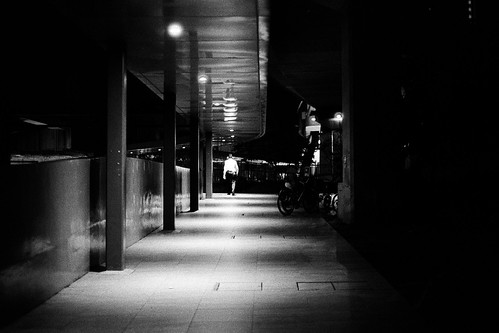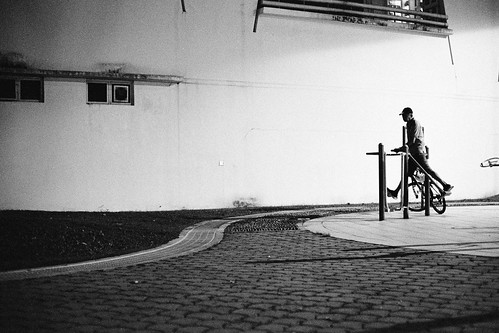I’m down to my last nine rolls of Ilford HP5+ at the time of writing, and postal services seem to be rather iffy about their availability amid this global pandemic. With avoiding crowded places being the responsible thing to do, I’ve shut the door – quite literally – on all outdoor activities save for the grocery run. Alas, a week into being a hermit, I started to suffer from withdrawal symptoms from a lack of contact with the shutter button, and no, I wouldn’t just be content with shooting things around my very cramped apartment.
With my previous run in with pushing Eastman 5222 a whopping 3 stops, and being rather pleased with the results given the circumstances, I decided that it might be worth a shot to dig deep into the freezer and pull out the very neglected bag of APX 100. I’d gotten the whole 100 feet at almost half what the same length 5222 would of have cost me. Sadly, the current APX 100 is nothing like the revered emulsion from AGFA’s legacy, and after shooting a roll at the native ISO, I decided that it was far too grainy for a far too slow a film to replace 5222. And so into the permafrost at the back of the freezer it went.
Things have changed though, and if APX 100 was going to be this grainy already, surely it wouldn’t hurt much from pushing it, right? Might as well give it some welly and shoot it at EI 3200 then, I’d thought.
So off I went into the early morning, ready to shoot with the ever-nagging possibility that all the images could end up going straight from the developing tank into the garbage chute. What a nice thought to start a photo walk with. With that in mind though, I bracketed some of my frames heavily, and made sure to get as much light as I could wherever possible, especially given the already rather mediocre ability to extract details out of the shadows, even when exposed at EI 100.
Developing the film was yet more crossed fingers and sketchy mathematics, as I went where no angel (or contributor to the Massive Dev Chart) had dared to go. 20% added time per every stop pushed, compounded, and an extra 10% to top it all off for some peace of mind. HC-110 was the developer of choice, well, as that was all I have in the cupboard other than the still untouched bags of Fujifilm Microfine.
As it turns out, the HC-110 did a surprisingly good job, all things considered. The grain, while looking sort of salt-and-pepperish, did not end up dominating the image the way something like Delta 3200 might have. In fact, the grain size barely increased at all! The lack of shadow detail accentuated the inkinesss of the night, so it does give an effect to my images that I am satisfied with. This might turn out to be a potential problem if I ever find myself needing to massage my scans to match my vision of the image, but right off the bat I think it works rather well. Heck, I’m asking a lot of a poor ISO 100 rated film!
I hope the results were interesting to you, and if you’d like a chat or see more of my stuff, you can check out the other articles I’ve written here, my Instagram, or my website. Ciao!
Share this post:














Comments
Rock on 5 Frames at 5 in the Morning With Even More Ludicrously Pushed APX 100 – By Hern Tan
Comment posted: 24/06/2020
Alex Vye on 5 Frames at 5 in the Morning With Even More Ludicrously Pushed APX 100 – By Hern Tan
Comment posted: 24/06/2020
shannon on 5 Frames at 5 in the Morning With Even More Ludicrously Pushed APX 100 – By Hern Tan
Comment posted: 24/06/2020
Parker Musselman on 5 Frames at 5 in the Morning With Even More Ludicrously Pushed APX 100 – By Hern Tan
Comment posted: 25/06/2020
Comment posted: 25/06/2020
Jamie W on 5 Frames at 5 in the Morning With Even More Ludicrously Pushed APX 100 – By Hern Tan
Comment posted: 25/06/2020
Comment posted: 25/06/2020